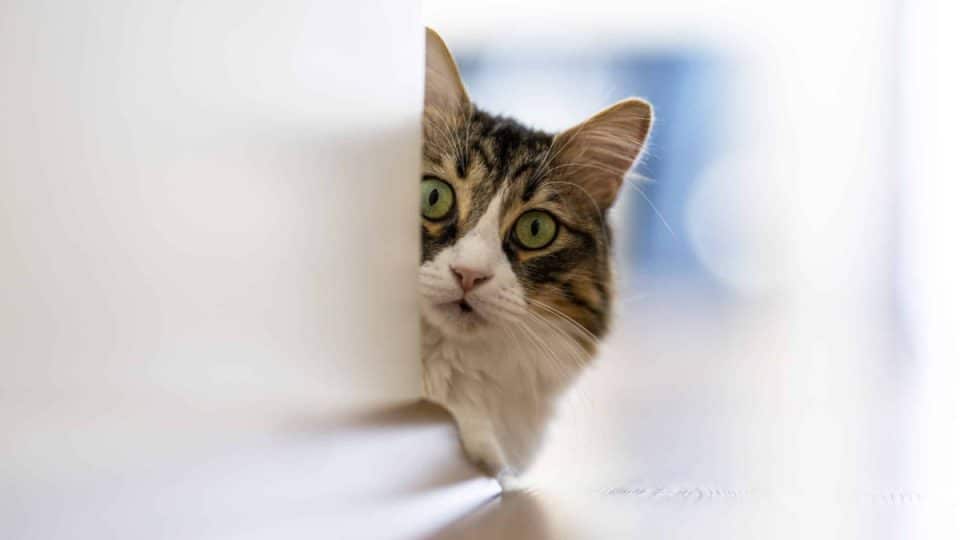While relatively rare, head pressing in cats is a compulsive behaviour that points to neurological damage and warrants immediate veterinary attention. The sooner you seek your vet’s help, the quicker they can identify the cause of your cat’s head pressing and the best way to treat it.
Cats are generally private creatures, so those who love them need to pay close attention to recognise signs of illness. Abnormal behaviours like pacing, excessive grooming, or peeing outside the litterbox are usually the first signs of an unwell cat. Additionally, a cat who constantly presses their head against a wall or object is signalling something is wrong.
Head Pressing vs. Head Bunting
When a cat exhibits head pressing, they’ll push their head relentlessly and forcefully against a wall or stationary object, such as a chair. Sometimes, a cat will slide their head along a wall until they reach a corner. Head pressing is a compulsive behaviour—meaning it’s a behaviour that occurs repeatedly and out of context, like excessive grooming or wool sucking (common in Siamese and Birman cats).
However, head pressing is miles apart from the playful head-bunting behaviour we see in cats. Dr Sabrina Kong, DVM, a veterinary consultant at We Love Doodles, fills us in on the difference.
“The main distinction between head pressing and head-bunting is that cats head-press against objects instead of people, and they do so vigorously and repeatedly,” she explains. It’s perfectly normal for your cat to push their head gently against your hand, Kong reassures us. This is a sign of affection, and it’s your cat’s way of marking you as a friend.
Head pressing is also different from a cat who can’t stop staring at a wall. Both behaviours are peculiar, but the majority of wall staring cases are rooted in harmless causes (the cat hears or sees something we don’t), whereas head pressing always indicates a serious neurological problem.
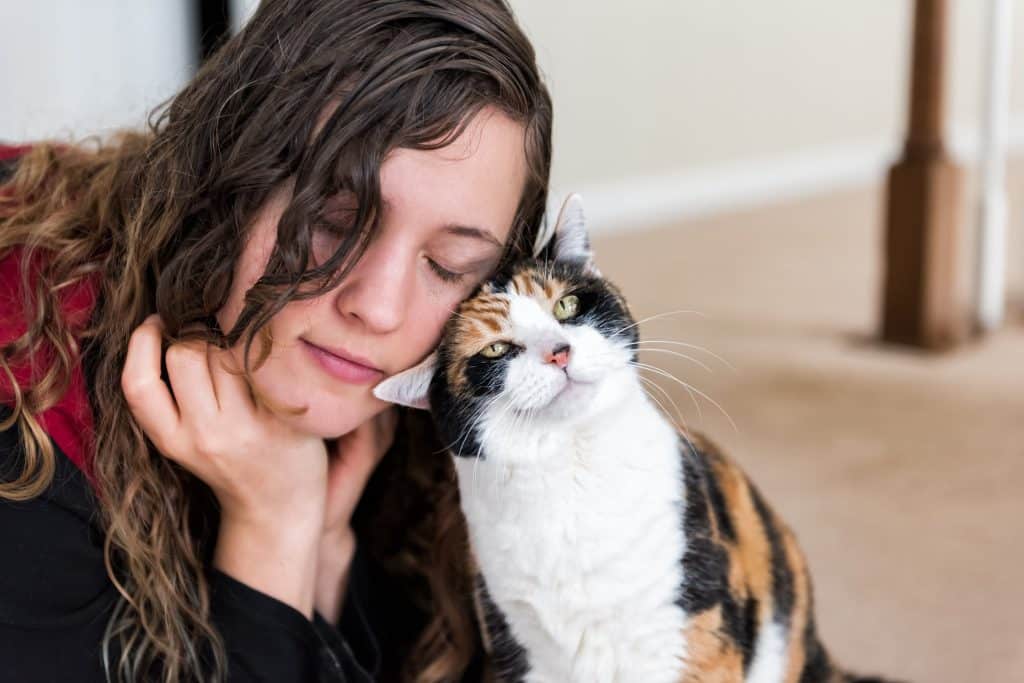
iStock/krblokhin
What Are the Symptoms of Head Pressing?
Because head pressing signifies damage to the nervous system, the behaviour often coincides with one or more of the following symptoms:
- Constant pacing. Affected cats may pace or circle restlessly. If they do so nonstop, it can result in sores on the feet.
- Dilated pupils. While a cat’s pupils can change in size for several reasons (many of them harmless), dilated pupils can also signify brain injury.
- Vision problems. Like the human eye, our cats’ eyes rely on the nervous system to function properly. If the nerves sustain damage, it can lead to impaired vision in cats.
- Facial injuries. Prolonged head pressing can lead to sores developing on the head or face.
- Seizures. Diseases that affect the brain can cause tremors, spasms, and convulsive fits in cats.
- Disorientation. Cats with neurological damage may also appear confused and lack coordination.
- Slower reflexes. Cats are ordinarily quick on their feet, but a cat experiencing nerve issues may become slow to react.
- Behaviour changes. A sudden burst of aggression, inappropriate elimination outside the litter box, or a change in your cat’s walking gait can occur alongside head pressing.
- Increased vocalisation. There are many reasons for meowing, but excessive crying or yowling has links to illness or distress.
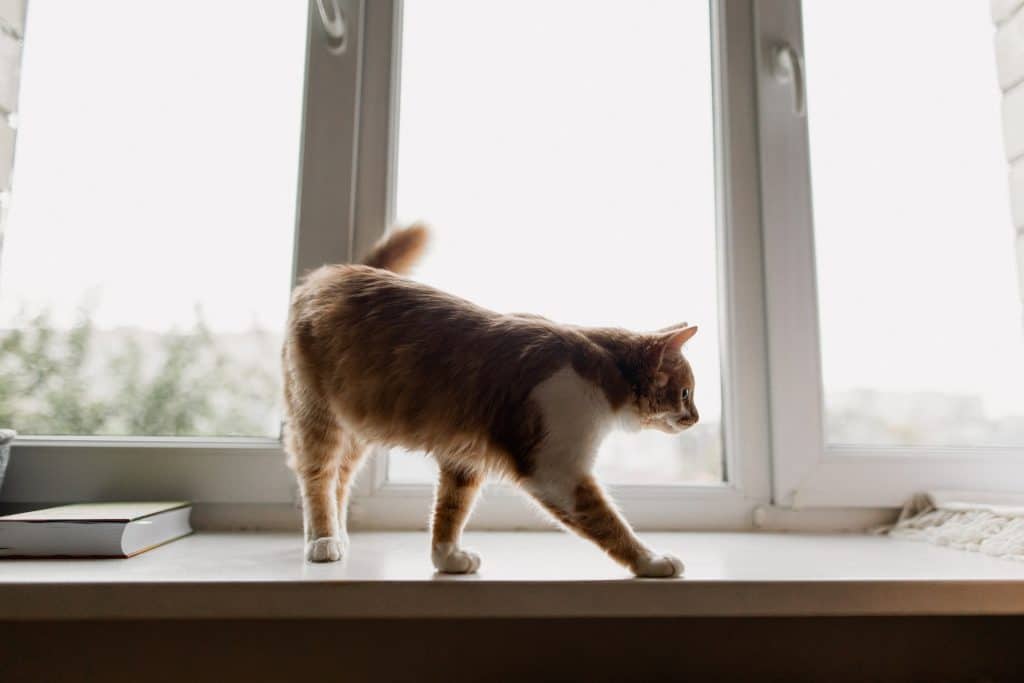
iStock/Nazar Rybak
What Causes Head Pressing in Cats?
Head pressing in cats can result from several medical conditions. Here are the eight most likely causes of this behaviour.
Prosencephalon disease
Head pressing is one symptom of this disease, in which a cat’s front portion of the brain is damaged. “In the case of prosencephalon disease, damage occurs in the forebrain and thalamus, affecting the way your cat behaves—from their reflexes to their vision,” explains Dr Kong.
Structurally, cat brains are similar to our own, with different regions responsible for various functions. The forebrain and the thalamus allow cats to walk properly and respond to stimuli normally. When those parts of the brain are damaged, head pressing can follow.
Poisoning
Head pressing is also among the clinical signs of poisoning in cats. Our pets can sustain liver and/or nerve damage from ingesting toxic plants, insecticides, or common household substances like bleach or antifreeze. Lead poisoning is another offender, which causes neurological damage in cats and can be found in the paint of older homes.
Nervous system infections
Symptoms like head pressing can appear if a viral or fungal infection attacks the nervous system. The rabies virus, for example, enters a cat’s nervous tissue and travels to the brain. Within 12-48 hours, neurological issues like muscle twitching can occur. Fungal infections can affect cats similarly by invading the tissue surrounding the eye. This can lead to blindness or struggles with balance.
Stroke
In the event of a stroke, a cat’s brain does not get enough oxygen, damaging neurons and impairing their function. When the damage takes place in a cat’s forebrain, they can experience head pressing along with a dip in alertness, loss of eye reflexes, weakness, circling, and seizures.
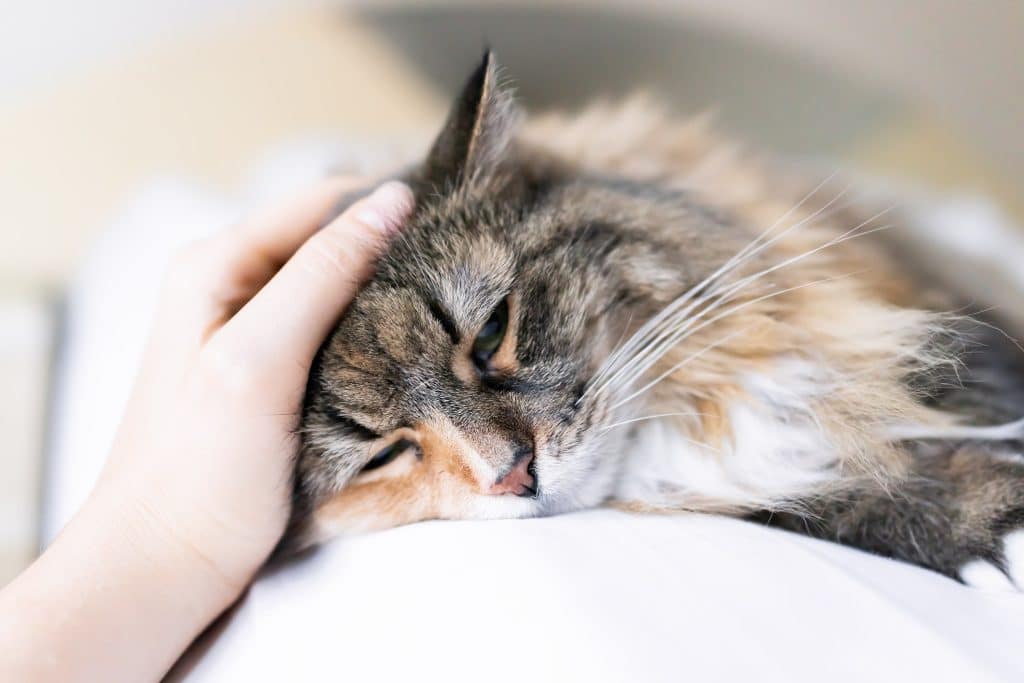
iStock/krblokhin
Brain tumours
Meningioma is the most common brain tumour in cats (and dogs). These tumours are usually benign and don’t metastasize to other body parts. The problem lies in the extra pressure these masses place on the brain, leading to inflammation and nerve damage, which causes alarming symptoms like head pressing.
Hepatic encephalopathy
Cats with liver disease can develop hepatic encephalopathy, a secondary metabolic disorder that affects the nervous system. This occurs when a cat’s liver is unable to detoxify their blood, and ammonia accumulates in the body. This disorder may lead to head pressing and swaying that may be more severe or obvious after eating.
Encephalitis
Encephalitis, or inflammation of the brain, is rare but life-threatening in cats. This can occur due to infections (bacterial, fungal, or viral) or immune system disorders. Neurological symptoms of encephalitis include head pressing, head tilting, changes in behaviour, disorientation, imbalance, and seizures.
Head trauma
Injury to a cat’s spine or brain can result in different neurological conditions, depending on where the trauma has occurred. A blow to your cat’s head, whether from a fight, car accident, or a fallen object, can lead to problems like head pressing, blindness, and pacing.
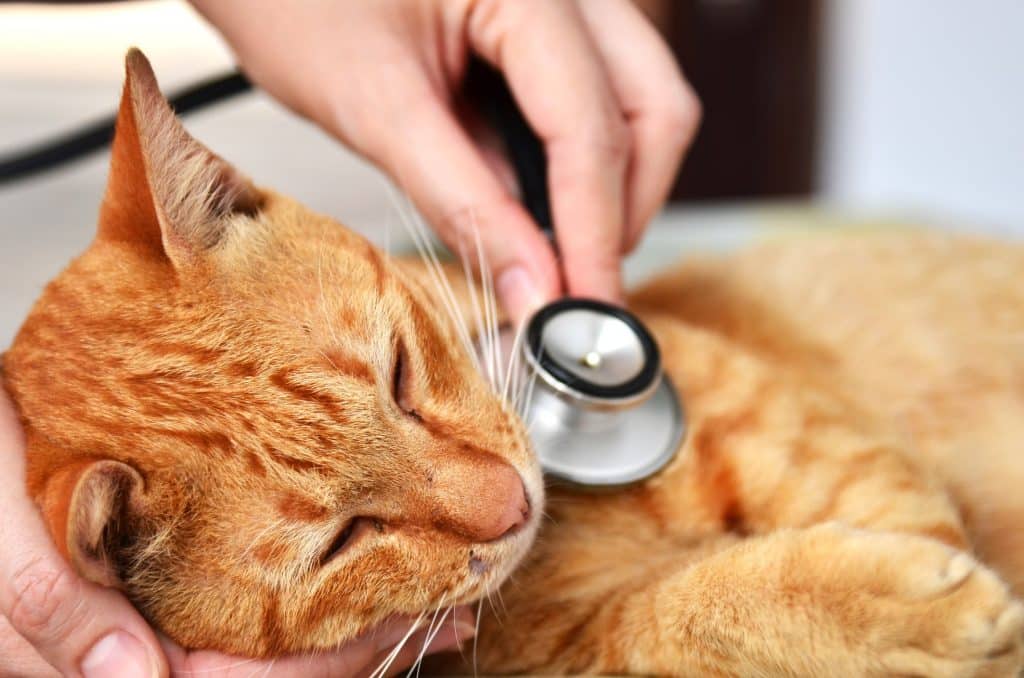
iStock/Jeng_Niamwhan
How Do Vets Diagnose Head Pressing?
A cat who is pressing their head against objects needs to see a vet to identify the underlying cause. “Cat head pressing is enough of a symptom for a vet to suspect any brain abnormality—it is distinctive enough in that sense,” points out Dr Kong.
To pin down the precise abnormality (and figure out the right course of treatment), your vet will first conduct a physical exam, including a close look at your cat’s eyes. “Your vet will perform an eye exam to check if they see any abnormalities or irregularities behind the eyes that could lead to brain damage,” says Dr Kong. From there, a CBC (complete blood count) will reveal any blood cell abnormalities. For example, an increased white blood cell count often means cats are fighting an infection.
Additional tests may include urinalysis, blood pressure tests, and a collection of cerebrospinal fluid, which can help diagnose neurological abnormalities.
If no obvious disease or poisoning presents itself, your vet may refer you to an animal hospital for medical imaging. An MRI, X-ray, or CT scan can reveal evidence of tumours or masses that could be pressing against the brain.
How Do Vets Treat Cat Head Pressing?
A cat’s treatment for compulsive head pressing will depend on what’s causing the behaviour in the first place. Once your vet diagnoses the underlying condition, they can move forward with the appropriate course of treatment.
For instance, if tests determine a cat has ingested poison, a vet might induce vomiting or prescribe fluids to combat dehydration. Chemotherapy or radiation can treat a cat with cancer, and surgery can often successfully remove meningioma tumours. Antibiotics are used to treat infections, corticosteroids may help to reduce brain inflammation and treat encephalitis.

iStock/Drazen_
Bottom Line: Don’t Ignore Head Pressing In Cats
If you notice your cat is pressing their head against things, it’s a sign they need to see their vet as soon as possible. It can be distressing to see your cat behaving strangely, but the sooner you seek treatment, the better their prognosis is likely to be.
